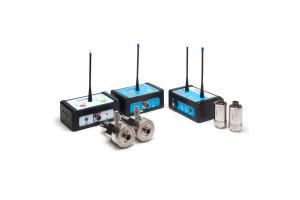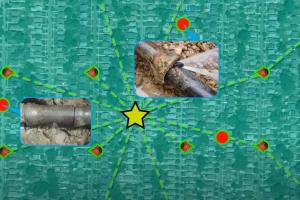Early Leak Detection Program: Improving Water Systems for Future Generations
The LeakFinder-STTM has been surveying the city’s network of asbestos cement main with a diameter ranging between 4” and 12” for over a period of two years and counting. Since implementation, the LeakFinder-STTM has been able to assist with response improvements by getting ahead of leaks before they became a major problem.
Situation
Echologics® provides high-quality and actionable information about buried water pipeline infrastructure, helping to optimize capital investments and rehabilitation programs. The LeakFinder-STTM is an acoustic-based correlating leak detection system that takes the guesswork out of locating leaks before they can be detected by conventional methods. Early leak detection minimizes the possibility of larger problems like pipe bursts, flooding, and property damage. Echologics was recently engaged by the City of Gold Coast (the City) in a trial designed to find a system that could sharpen leak detection capability with a small margin of error.
Solution
The City’s water network coverage spreads far and wide with some parts of this infrastructure buried in hard-to-access remote areas, making it challenging to partition into district metered areas (DMA) for active leakage management and regular maintenance. As a result, where potential leaks might occur became an unknown. Following rounds of successful trials and evaluation, the Echologics LeakFinder-STTM was deployed, in part because of the user-friendly interface, non-invasive approach and precise pinpointing of leaks with low frequencies.
The system is set up to keep utility crews out of the street with its deployment simplicity. The field crew may choose to work with two different pipe segments without compromising results.
“We also use the equipment to attend to reactive works where the leak is not showing to surface in order to assist maintenance crews in locating the leak. We would typically set it up from a hydrant to hydrant (or any fittings we can access) and locate the leak and mark up for repair,” adds Dawson.
Results
Since implementation, the LeakFinder-STTM has been able to assist with response improvements by getting ahead of leaks before they became a major problem. One salient example was the successful detection of a non-surfacing leak first triggered by notifications from the public due to the sighting of water flowing heavily from the rear of a property on Monaco Street - an occurrence that only happened during wet weather. A precise correlation exercise using the LeakFinder-STTM revealed the location of the leak for subsequent investigation and repair work. Within 72hours, repair work was completed, and flow returned to normal immediately. This has resulted in an annual potential savings of AU$1millon.
The LeakFinder-STTM has been surveying the City’s network of asbestos cement main with a diameter ranging between 4” and 12” for over a period of two years and counting.
Aligning with the City’s 2019-2024 Water Strategy objectives, the effect of the leak detection program is undoubtedly improving the efficiency and effectiveness of the City’s existing detection and response processes.





